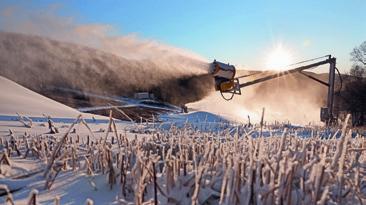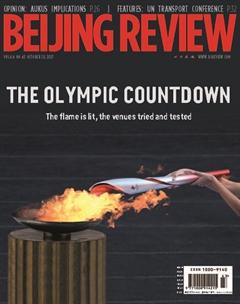BEYOND THE OLYMPICS
By Tao Xing

Well before the Olympic and Paralympic Winter Games Beijing 2022, which are just about three months away, Feng Yinong, a girl from Zhangjiakou of Hebei Province, has already enjoyed its benefits.
A high-speed railway built to link the competition zones across Beijing and Zhangjiakou, the two host cities, has shortened the journey back to her hometown.
In 2015, when China won the bid for the Beijing 2022 Games, Feng was a student in Beijing. Back then, she had to spend three to four hours traveling home to visit her parents. There was a dire need for speed.
That need has been met since December 30, 2019, when the most important transportation project for the Games, the Beijing-Zhangjiakou highspeed railway, went into operation. The 174-km-long railway, on which trains can travel at a maximum speed of 350 km per hour, slashes travel time between the two cities to merely 47 minutes, making it more convenient for winter sports fans to access the rich snow resources of Zhangjiakou and for Feng to go back home.
“Today, if I buy a ticket for the earliest train, I can be at my parentsplace before 9 a.m.,” Feng told Beijing Review. An extensive and efficient transportation network linking all three competition zones, namely downtown Beijing, Yanqing District and Zhangjiakous Chongli District has gradually come into being, including a highway that went into operation in 2019 to connect Beijing with Chongli, where most of the skiing events of the Beijing 2022 Games will take place.
“The upcoming Olympics will also boost Zhangjiakous overall development, especially in the winter sports industry,” Feng said. With its abundant snowy assets, the city now has brand new prospects brimming on the horizon.
Ramping it up
Zhangjiakou will host more than 50 events of six disciplines across two snow sports during the Games. To make the most of the Olympic Games, the Zhangjiakou local government has listed tourism and the winter sports industry as its main fostered industries, Lu Qing, an official of the city, told Beijing Review.
The rising number of tourists flocking to the city has resulted in more job opportunities and higher local incomes. In 2015, 16.8 percent of the 100,000 residents in Chongli, then a county under Zhangjiakou, were living under the national poverty line. The county became a district of Zhangjiakou in 2016. In May 2019, the district moved out of poverty. In Chongli, nearly 30,000 of its 126,000 residents were employed by ski resorts or related companies and organizations, Xinhua News Agency reported in mid-2020.

